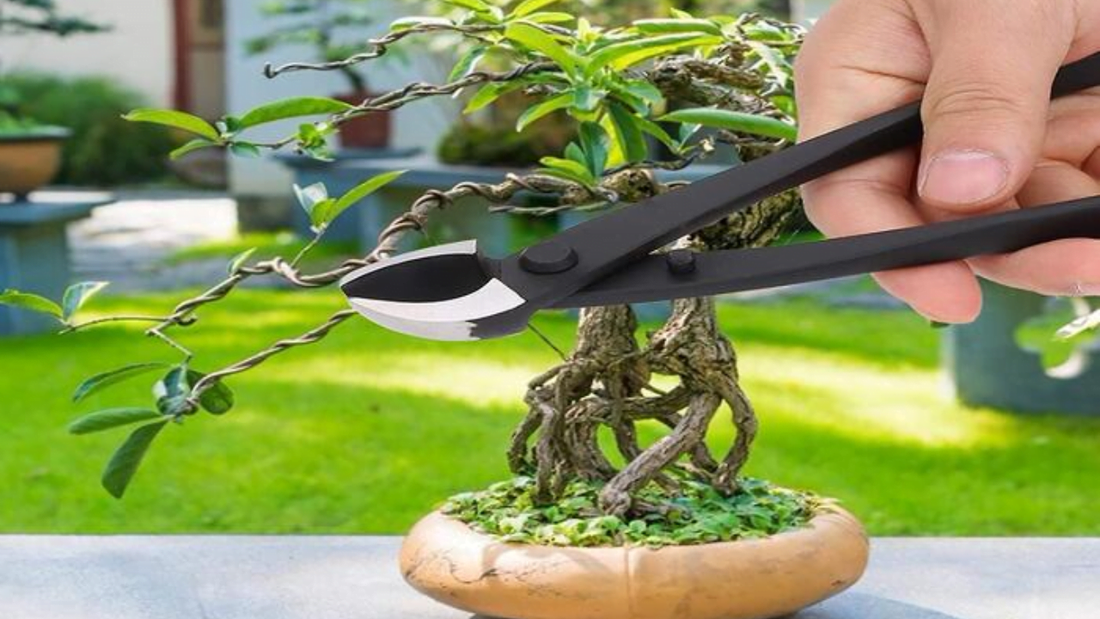Among all the tools available to bonsai enthusiasts, the concave branch cutter is one of the most essential. It's easy to cut branches with a bonsai concave branch cutter without damaging the bark or leaving ugly scars.
Furthermore, they promote faster healing and growth, reduce infection risks, and allow for better pruning control.
In this article, let's take a look at why every bonsai enthusiast needs a concave branch cutter in their toolkit and how they help with bonsai cultivation.
What is a bonsai concave branch cutter?
Bonsai concave branch cutter helps you to prune your bonsai tree with minimal damage and speed up the healing process.
With its concave cut and smooth finish, it blends in naturally with the rest of the bark of your tree. You can use concave cutters to remove branches and nubs.
Moreover, there's no bonsai collection without concave cutters. You can use it to remove both living and dead branches. There aren't a lot of tools that can replace bonsai concave pliers. It's all because of the cutting edges.
In concave cutters, the jaws leave an elongated wound on the bonsai. It heals quickly and leaves little scarring.
Even thick branches can be cut using a concave cutter depending on their type, condition, and size. Additionally, you can use sharp concave pliers from 27cm long to 3-4cm in diameter
Types of bonsai concave cutter

Following are the types of bonsai concave cutters:
Black: This is the most common concave cutter. It's black-coated before it's sanded. However, the bonsai concave cutter's color doesn't tell you much about its quality.
Stainless steel: A stainless steel concave cutter looks great. Also, this is better than black concave pliers, but not always.
Round: Almost like a round-head bonsai cutter and a concave bonsai cutter. It's a little rounder when pruning. Furthermore, a round concave cutter cuts a little deeper and can handle a greater amount of force. That also means you can't bend it.
How to use a concave bonsai cutter?
Firstly, choose the right size. A concave bonsai cutter under 20 cm is only suitable for small trees. However, for bonsai enthusiasts, a concave cutter of 21-27cm is usually sufficient.
Also, whenever you use concave cutters, make sure you cut lengthways rather than across the trunk or branch. It allows the wound to heal faster, and, above all, better, as there are fewer sap tracts injured.
After purchasing a branch, do not cut it if it is too strong. With a small bonsai cutter, the cutting edges can get bent out if you use too much force.
With sharp concave cutters, you can get a really clean cut. On bonsai, such wounds heal quickly and well. Additionally, it's easy to re-cut even precisely with high-quality concave bonsai.
Moreover, you'll need tool oil to take care of the concave bonsai cutter (also rustproof). When you clean and oil them after work, the concave bonsai cutter will run smoothly and won't rust.
Benefits of using a bonsai concave branch cutter

Here are some benefits of using bonsai concave branch cutters:
With bonsai concave branch cutters, you can cut branches cleanly and precisely without damaging the bark or leaving unsightly scars.
Because the blades are concave, they create a small hole that allows for faster growth and healing.
By making clean cuts, bonsai concave branch cutters also reduce the risk of infection that can result when a branch is torn or damaged. They minimize bacterial or fungal infection chances by making clean cuts with sharp blades.
The concave shape of the blades of bonsai concave branch cutters helps to create a small indentation on the branch, which allows for faster healing and growth. This means that the tree will recover from pruning faster and will be less susceptible to disease or pests.
Concave branch cutters for bonsai are more effective than straight branch cutters because they allow a more precise cut and better control of angle and depth. In this way, the tree is pruned evenly and no unnecessary damage is caused.
Moreover, concave branch cutters made of high-quality materials last for a long time. Hence, bonsai enthusiasts can enjoy these tools for many years with proper care and maintenance.
Conclusion
An essential tool for bonsai enthusiasts is concave branch cutters. With such tools, branches can be cut very precisely and cleanly without damaging the bark or leaving unsightly scars.
It promotes faster healing and growth while reducing infection risk by creating a small indentation. When properly maintained, they offer better control over pruning processes and are made from durable, high-quality materials.
Overall, considering all benefits, bonsai concave branch cutters are an essential tool for any bonsai enthusiast.






















